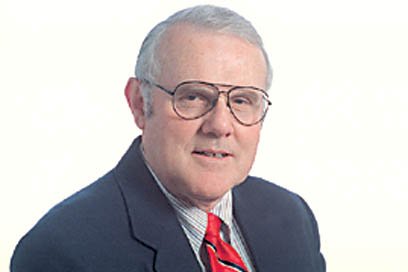Four projects commemorating the Lewis and Clark expedition remain to be built on the Columbia River system within the next two years. By 2012, the Confluence Project is expected to complete its work, which started in 2000, according to Jane Jacobsen, its executive director.
The goal is to finish seven locations along the Lewis and Clark trail in Oregon and Washington. The first was Cape Disappointment on Baker Bay near the point the Columbia flows into the Pacific Ocean. The commemoration point is highlighted by a polished basalt stone made into a fish-cleaning station on Baker Bay. The walk west is over a crushed oyster-shell trail that ends in a glen graced by cedar driftwood. The pieces represent six directions in Native American tradition: east, west, north, south, up and down.
The second installation was at the Fort Vancouver National Site, crossing state Highway 14. The land bridge connects the fort with the Columbia River, a traditional crossroads of commerce between Native Americans and Europeans.
The most recent project along the 450-mile stretch of the Columbia is a one-mile elliptical trail on Oregon’s Sandy River Delta, which leads to a bird blind. Names of 129 species of birds and wildlife identified by Lewis and Clark are listed there.
Projects scheduled for the next two years include Celilo Park near The Dalles, Ore., which was a great waterfall until 1957, when a Columbia River dam stilled its waters
The Confluence organization declared that “the restoration of Celilo Park … will renovate a historic community commons and feature world-class artwork by artist Maya Lin (who has) designed a simple arc cantilevered at the river’s edge. There, visitors can imagine the lost roar of the falls, the spray of water upon rocks and the rich community that flourished for time immemorial. An engraved walkway will lead visitors to explore the areas of cultural and ecological history.”
The project and proposed artwork and restoration have been endorsed by the four ceded tribes of the Celilo and Celilo Village residents who use the park for fishing and restoration. Jacobsen said Lin, the acclaimed artist who will design all seven of the river projects, will be in the region in mid-April. She will be briefed on the projects and speak at Eastern Washington University, Cheney, and Leavenworth.
Another project is Chief Timothy Park: “Listening to the landscape.” This location is near the confluence of the Clearwater and Snake Rivers at Clarkston. “We’re trying for Chief Timothy dedication this fall,” Jacobsen said. Yet another is at Sacajawea State Park. “Exploring a storied past” will be located at the confluence of the Snake and Columbia rivers in Pasco. Partial dedication is set for April 17, full dedication on Aug. 28. The design commemorates a location mentioned in the Lewis and Clark journals, and a part of the homeland of the Umatilla tribe.
Ridgefield will be the seventh and final project. It is in partnership with Washington State University Vancouver, Jacobsen explained. The location is adjacent to the 5,200-acre Ridgefield National Wildlife Refuge, which is on the Pacific Flyway along the West Coast and home to thousands of migrating wild birds. Lin will design a research building to be erected there by WSU. Dedication is expected in 2012.
The Confluence Project has raised $28 million for its work, according to Ward Cook, financial director. Jacobsen said it also has a new office at 415 W. Sixth St., Vancouver, made possible by Columbian publisher Scott Campbell.
Public school education has been another outgrowth of the Confluence Project. A booklet entitled “Confluence Project in the Schools” describes teaching programs, enhanced curriculum and teaching depth. It was done by working with tribal members at teacher training, as well as having tribal members in the classrooms. The Confluence Project allocated $5,000 in grants to each of 29 school projects along 450 miles of the Columbia. A Confluence board member, Chief Cliff Snider, said participation “… was for me, a Chinook elder, a blessing, a dream situation I will carry for the rest of my life …”



